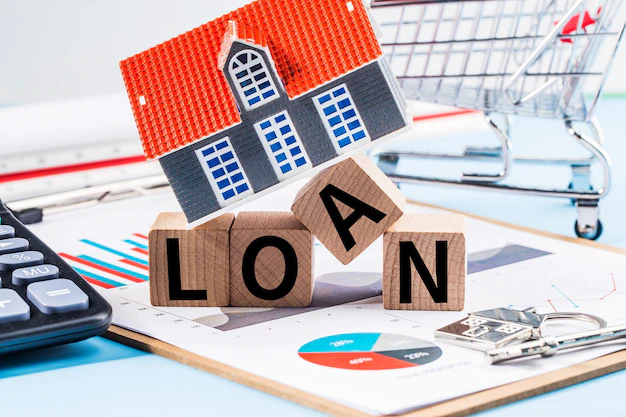How To Choose The Best Online Loan?
Loans may help you achieve major life goals you could not otherwise afford, like enrolled or investing in a home. You can find loans for every type of actions, and even ones will pay back existing debt. Before borrowing any money, however, it is critical to have in mind the type of mortgage that’s suitable for your requirements. Here are the most typical varieties of loans along with their key features:

1. Personal Loans
While auto and mortgage loans are prepared for a specific purpose, unsecured loans can generally be used for everything else you choose. Some people utilize them for emergency expenses, weddings or home improvement projects, as an example. Loans usually are unsecured, meaning they just don’t require collateral. They may have fixed or variable rates and repayment relation to 3-4 months to a few years.
2. Automobile loans
When you purchase a vehicle, a car loan permits you to borrow the buying price of the automobile, minus any advance payment. The automobile can serve as collateral and is repossessed when the borrower stops paying. Auto loan terms generally cover anything from Three years to 72 months, although longer loans have grown to be more widespread as auto prices rise.
3. School loans
Student education loans may help buy college and graduate school. They are offered from the authorities and from private lenders. Federal education loans are more desirable since they offer deferment, forbearance, forgiveness and income-based repayment options. Funded with the U.S. Department of your practice and offered as federal funding through schools, they sometimes undertake and don’t a credit assessment. Car loan, including fees, repayment periods and rates, are the same for every single borrower sticking with the same type of mortgage.
Student loans from private lenders, on the other hand, usually demand a credit check needed, and every lender sets its very own car loan, interest levels and costs. Unlike federal student loans, these refinancing options lack benefits like loan forgiveness or income-based repayment plans.
4. Mortgages
A home financing loan covers the value of an home minus any deposit. The property serves as collateral, that may be foreclosed by the lender if mortgage payments are missed. Mortgages are normally repaid over 10, 15, 20 or Thirty years. Conventional mortgages aren’t insured by government agencies. Certain borrowers may be entitled to mortgages backed by government agencies just like the Federal housing administration mortgages (FHA) or Virtual assistant (VA). Mortgages might have fixed interest levels that stay the same through the lifetime of the loan or adjustable rates that may be changed annually by the lender.
5. Home Equity Loans
Your house equity loan or home equity personal credit line (HELOC) lets you borrow up to percentage of the equity at home for any purpose. Hel-home equity loans are quick installment loans: You receive a lump sum and repay as time passes (usually five to Thirty years) in regular monthly installments. A HELOC is revolving credit. Just like a charge card, you can combine the credit line as needed within a “draw period” and just pay a person’s eye for the loan amount borrowed before the draw period ends. Then, you typically have Two decades to repay the money. HELOCs have variable interest rates; hel-home equity loans have fixed interest levels.
6. Credit-Builder Loans
A credit-builder loan is made to help people that have a bad credit score or no credit file increase their credit, and might n’t need a credit assessment. The bank puts the loan amount (generally $300 to $1,000) right into a piggy bank. After this you make fixed monthly payments over six to Two years. In the event the loan is repaid, you obtain the cash back (with interest, sometimes). Prior to applying for a credit-builder loan, make sure the lender reports it towards the major services (Experian, TransUnion and Equifax) so on-time payments can raise your credit score.
7. Consolidation Loans
A debt consolidation loan can be a personal unsecured loan designed to pay off high-interest debt, such as charge cards. These refinancing options could help you save money if your rate of interest is lower in contrast to your overall debt. Consolidating debt also simplifies repayment as it means paying just one single lender as an alternative to several. Paying off credit debt with a loan is able to reduce your credit utilization ratio, improving your credit score. Debt consolidation loans can have fixed or variable rates of interest as well as a selection of repayment terms.
8. Payday Loans
One kind of loan to stop is the cash advance. These short-term loans typically charge fees equivalent to annual percentage rates (APRs) of 400% or even more and ought to be repaid completely from your next payday. Which is available from online or brick-and-mortar payday loan lenders, these refinancing options usually range in amount from $50 to $1,000 and don’t have to have a appraisal of creditworthiness. Although payday advances are easy to get, they’re often difficult to repay promptly, so borrowers renew them, leading to new fees and charges plus a vicious cycle of debt. Loans or bank cards are better options when you need money for an emergency.
What sort of Loan Has the Lowest Interest Rate?
Even among Hotel financing of the identical type, loan interest rates can vary depending on several factors, like the lender issuing the credit, the creditworthiness in the borrower, the loan term and if the loan is secured or unsecured. Normally, though, shorter-term or loans have higher interest rates than longer-term or secured loans.
For more info about Hotel financing browse our site
